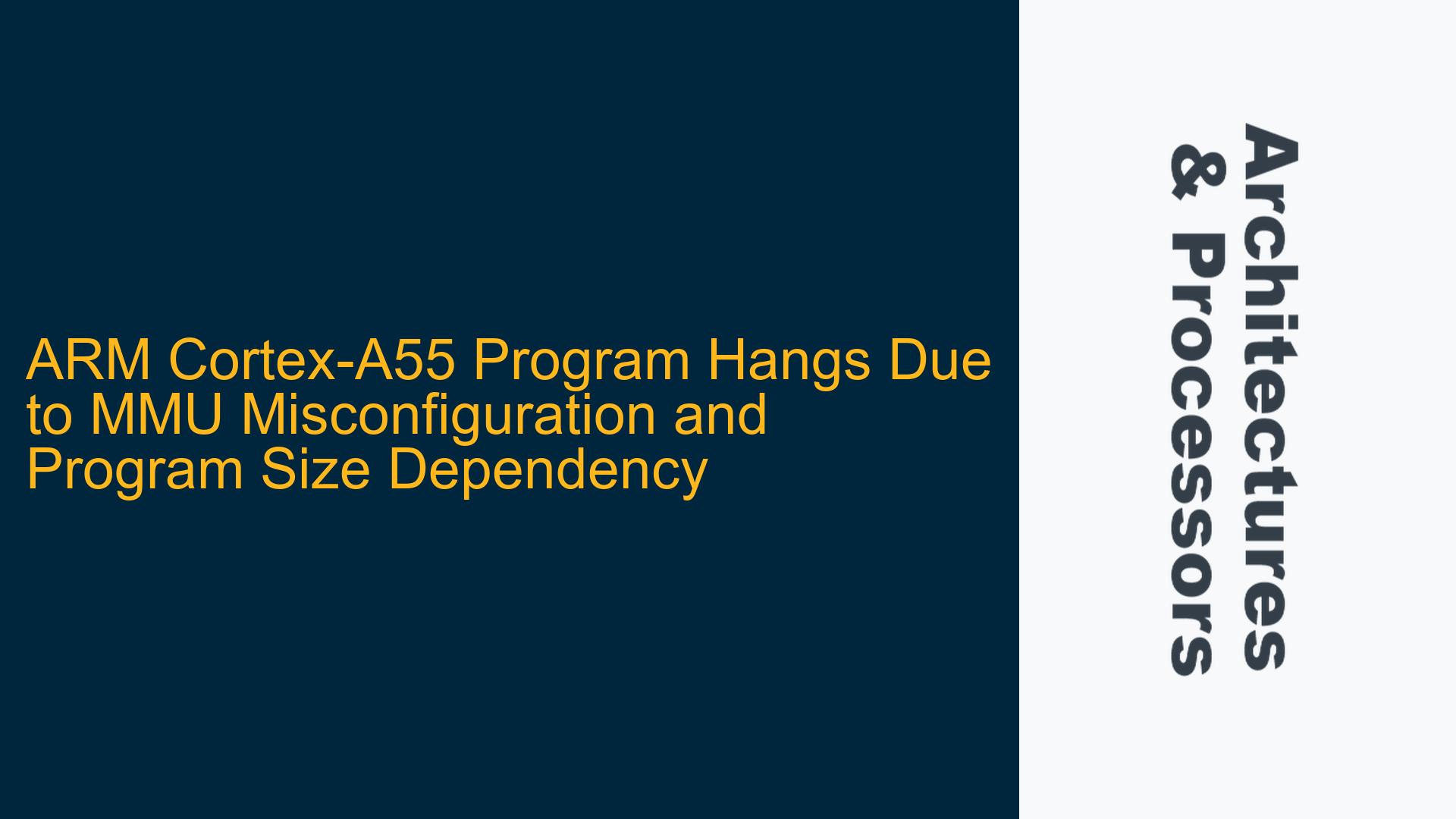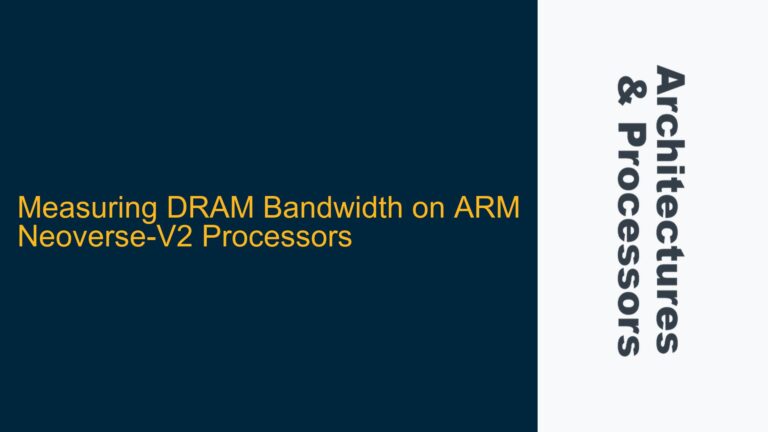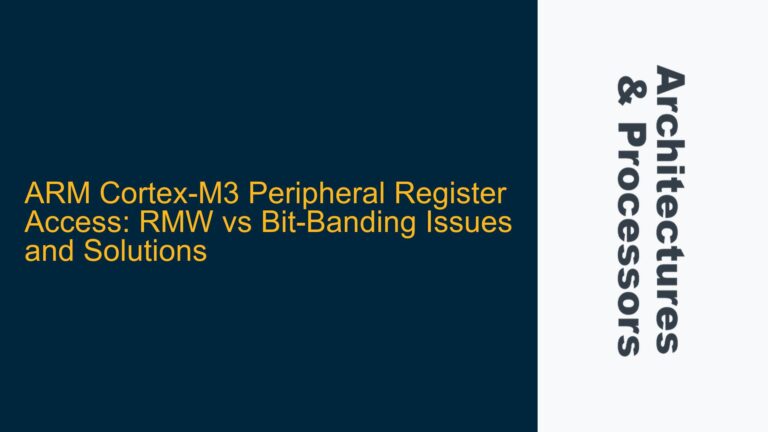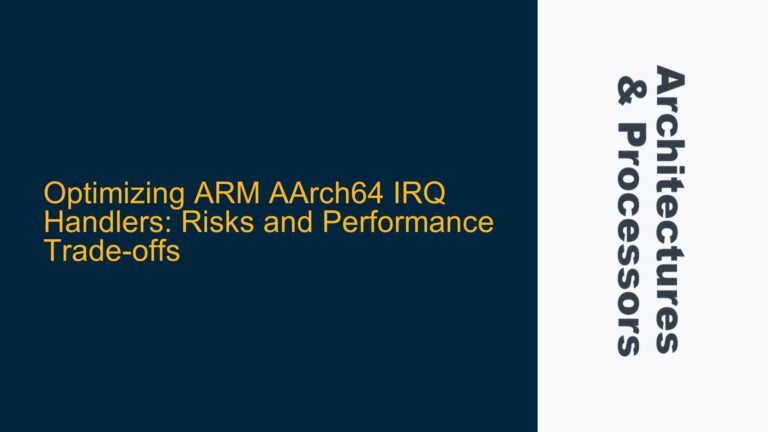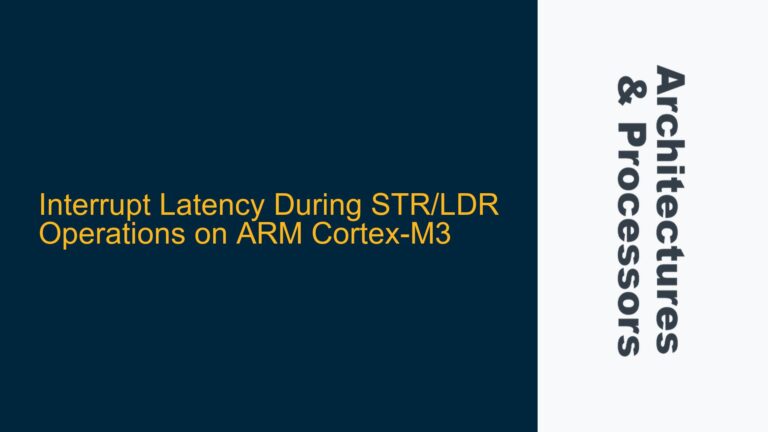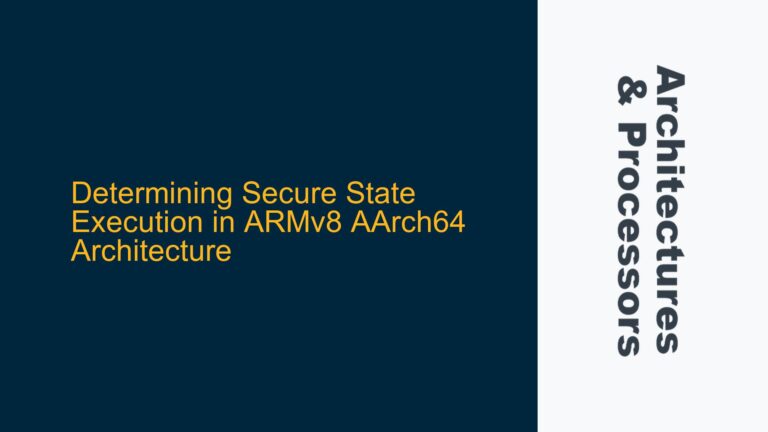ARM Cortex-A55 Program Hangs During Execution with Large Program Size
The issue at hand involves a Cortex-A55-based bare-metal debugging scenario where the program hangs during execution when the program size exceeds a certain threshold. The problem manifests specifically when attempting to branch to a function (access_test2()), which results in an undefined branch destination. This behavior is inconsistent and depends on the program size, with smaller programs executing correctly and larger ones failing. The root cause was traced to a misconfiguration in the Memory Management Unit (MMU) table, specifically the translation table base register (TTBR) settings, which were not dynamically adjusted to account for changes in program size. This misalignment caused the program to reference incorrect memory addresses, leading to undefined behavior and program hangs.
The issue is further complicated by the fact that the behavior changes with different optimization levels (OPT_LEVEL). For instance, at OPT_LEVEL = 1, the program might work correctly, but at OPT_LEVEL = 3, it hangs even with a smaller program size. This suggests that the compiler’s optimization strategies influence memory layout and alignment, exacerbating the underlying MMU misconfiguration.
MMU Table Misalignment and TCR_EL1 Register Configuration Errors
The primary cause of the issue lies in the MMU table configuration, specifically the translation table base address (TTBR) settings. The MMU is responsible for translating virtual addresses to physical addresses, and its configuration is critical for proper program execution. In this case, the translation table base address (TTB0_L2_PERIPH) was hardcoded to a fixed value, which did not account for changes in program size. As the program size increased, the correct start address shifted by 4 KB, causing the MMU to reference incorrect memory regions. This misalignment led to undefined behavior, such as branch instructions pointing to invalid addresses and memory regions being overwritten with placeholder values like 0xDEADBEEF.
Another contributing factor is the configuration of the TCR_EL1 register, which controls the translation table walk and address translation behavior. The TCR_EL1 register was set to map a 40-bit physical address space (1 TB), but the accompanying MMU table configuration did not align with this setting. Specifically, the TCR_EL1 register was configured with the following parameters:
- T0SZ (Translation Table Offset for TTBR0): Set to 24, indicating a 40-bit address space.
- TG0 (Granule Size for TTBR0): Set to 4 KB.
- IPS (Intermediate Physical Address Size): Set to 40 bits.
However, the MMU table was not dynamically updated to reflect changes in program size, leading to misaligned memory references. Additionally, the TCR_EL1 configuration did not account for the possibility of overlapping memory regions or invalid translations, which further exacerbated the issue.
The problem was also influenced by the compiler’s optimization level. Higher optimization levels (OPT_LEVEL = 3) can rearrange code and data sections, leading to changes in memory layout. This rearrangement can expose underlying MMU misconfigurations that were not apparent at lower optimization levels. For example, at OPT_LEVEL = 1, the program might fit within the initially configured memory region, but at OPT_LEVEL = 3, the increased code size or altered memory layout could push the program beyond the configured bounds, causing it to hang.
Correcting MMU Table Configuration and TCR_EL1 Settings
To resolve the issue, the MMU table configuration must be dynamically adjusted to account for changes in program size. This involves modifying the translation table base address (TTB0_L2_PERIPH) to reflect the actual program start address, rather than using a fixed value. The following steps outline the necessary corrections:
-
Dynamic Calculation of Translation Table Base Address:
The translation table base address should be calculated based on the program’s memory layout, which can be obtained from the linker script or the image file. This ensures that the MMU table aligns with the program’s actual memory usage, regardless of its size. For example, the base address can be derived from theImage$$RO$$BaseandImage$$RO$$Limitsymbols, which define the start and end of the program’s read-only section. -
Updating TCR_EL1 Register Configuration:
TheTCR_EL1register should be configured to match the physical address size and memory layout of the program. This includes setting theT0SZfield to reflect the desired address space size (e.g., 40 bits for 1 TB) and ensuring that the granule size (TG0) aligns with the memory page size (e.g., 4 KB). Additionally, theIPSfield should be set to match the intermediate physical address size. -
Ensuring Proper Memory Barriers:
After updating theTCR_EL1register, a memory barrier instruction (ISB) should be executed to ensure that the changes take effect before proceeding with program execution. This prevents speculative execution from using outdated translation table settings. -
Verifying Memory Layout at Different Optimization Levels:
The memory layout should be verified at different optimization levels to ensure that the MMU table configuration remains valid. This can be done by examining the linker map file or using debugging tools to inspect the memory regions. If necessary, the linker script should be adjusted to account for changes in memory layout caused by higher optimization levels. -
Testing with Varied Program Sizes:
The program should be tested with varying sizes to ensure that the MMU table configuration remains robust. This includes testing with both small and large programs, as well as different optimization levels, to identify and address any remaining issues.
By implementing these corrections, the program can reliably execute regardless of its size or optimization level. The key is to ensure that the MMU table configuration dynamically adapts to changes in program size and memory layout, preventing misaligned memory references and undefined behavior.
Detailed Explanation of MMU and TCR_EL1 Configuration
To provide a deeper understanding of the issue and its resolution, let’s delve into the specifics of MMU and TCR_EL1 configuration:
MMU Table Configuration
The MMU uses translation tables to map virtual addresses to physical addresses. Each entry in the translation table corresponds to a memory region, and the base address of the table is stored in the translation table base register (TTBR). In this case, the TTB0_L2_PERIPH entry was hardcoded to a fixed value, which did not account for changes in program size. As the program size increased, the correct start address shifted by 4 KB, causing the MMU to reference incorrect memory regions.
To correct this, the translation table base address should be dynamically calculated based on the program’s memory layout. This can be achieved by using symbols defined in the linker script, such as Image$$RO$$Base and Image$$RO$$Limit, which specify the start and end of the program’s read-only section. By deriving the base address from these symbols, the MMU table can align with the program’s actual memory usage.
TCR_EL1 Register Configuration
The TCR_EL1 register controls the translation table walk and address translation behavior. It includes fields for specifying the translation table offset (T0SZ), granule size (TG0), and intermediate physical address size (IPS). In this case, the TCR_EL1 register was configured with the following parameters:
- T0SZ: Set to 24, indicating a 40-bit address space.
- TG0: Set to 4 KB, indicating a granule size of 4 KB.
- IPS: Set to 40 bits, indicating an intermediate physical address size of 40 bits.
However, the accompanying MMU table configuration did not align with these settings, leading to misaligned memory references. To resolve this, the TCR_EL1 register should be configured to match the physical address size and memory layout of the program. This includes ensuring that the T0SZ field reflects the desired address space size and that the granule size (TG0) aligns with the memory page size.
Memory Barriers and Synchronization
After updating the TCR_EL1 register, a memory barrier instruction (ISB) should be executed to ensure that the changes take effect before proceeding with program execution. This prevents speculative execution from using outdated translation table settings, which could lead to undefined behavior.
Linker Script and Memory Layout
The linker script plays a crucial role in defining the program’s memory layout. It specifies the start and end addresses of different memory sections, such as the read-only section (RO), read-write section (RW), and zero-initialized section (ZI). By examining the linker map file, developers can verify that the MMU table configuration aligns with the program’s memory layout. If necessary, the linker script should be adjusted to account for changes in memory layout caused by higher optimization levels.
Testing and Validation
The program should be tested with varying sizes and optimization levels to ensure that the MMU table configuration remains robust. This includes testing with both small and large programs, as well as different optimization levels, to identify and address any remaining issues. By thoroughly testing the program, developers can ensure that the MMU table configuration dynamically adapts to changes in program size and memory layout, preventing misaligned memory references and undefined behavior.
Conclusion
The issue of program hangs during execution on a Cortex-A55 processor, particularly with larger program sizes, is primarily caused by misconfigurations in the MMU table and TCR_EL1 register. By dynamically calculating the translation table base address and ensuring proper alignment with the program’s memory layout, developers can prevent misaligned memory references and undefined behavior. Additionally, careful configuration of the TCR_EL1 register and thorough testing at different optimization levels are essential for robust and reliable program execution. By addressing these issues, developers can ensure that their programs run smoothly on Cortex-A55 processors, regardless of size or optimization level.
